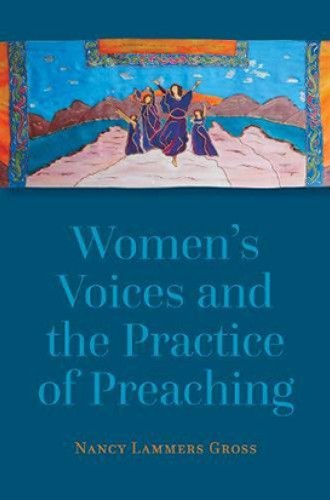How a woman sounds in the pulpit
Preaching is an embodied act. Do women perform it differently from men?
Books on preaching rarely pay attention to preaching as an aural event—something more like poetry than nonfiction, a live and embodied art that (like drama) is only fully realized in performance. Nancy Lammers Gross, a specialist in speech communication, makes a valuable contribution by venturing into this infrequently explored terrain.
Gross’s analysis is based on more than 20 years of experience as a preaching professor, first at Palmer Theological Seminary (formerly Eastern Baptist Theological Seminary) and currently at Princeton Theological Seminary. She describes her expertise for the project as “an eclectic combination of skills, training, experience, and knowledge about the body and how it produces sound, pastoral awareness of women’s issues with their bodies, and theological conviction about the gifts women bring to ministry.”
Read our latest issue or browse back issues.
The book focuses on the speaking voice of female preachers, with glancing reference to the metaphorical use of voice as “a woman’s perspective as expressed in a sermon” or “the entitlement to speak.” The two are often related, as Gross acknowledges: “Women who struggle to use their speaking voices in the pulpit usually do not feel they have permission to speak.” She illustrates this problem through a variety of voices, including three narratives by women preachers, two composites, and her own autobiographical story.
But the book is frustratingly uneven. The first chapter, an extended interpretation of Miriam aimed at demonstrating the validity of women’s voices, makes for a ponderous start. I wonder whether readers of this book would need such a biblical warrant.
The three narratives that follow demonstrate Gross’s commitment to having women speak in their own voices. She offers them as illustrations of three variants of women who struggle with speaking: one who undercuts her authority with a weak breathy voice and constant smile; one experienced speaker who is rendered insecure by a harsh supervisor; and one with a history of sexual abuse. Gross intentionally does not disclose these women’s racial and ethnic identities, presumably to foreground their commonality as women. But this seems an odd choice in juxtaposition with what follows. The composites represent a Korean woman and an African American woman, and each contains very specific details that undercut the claim that they represent typical Korean and African American women. Further, Gross does not say how many real-life women she used to produce these composites, which she describes as “historical fiction.”
This book is meant to be an intervention for women who have trouble speaking, yet I found myself resisting its focus on women’s deficits and the disadvantages of female socialization. This focus has the unfortunate effect of treating what men do as the implicit standard, even as Gross repeatedly affirms the value of women’s voices and experiences.
Some assessment of scope here would have been helpful. How common are these problems among Gross’s female students? How does gender socialization also inhibit men’s full expression in preaching? Gross doesn’t mention that many men have a narrower vocal range than women, rendering them more likely to have monotone delivery; that men are more likely to use off-putting gestures such as pointing; or that men sometimes find it difficult to connect head with heart, gravitating to the more doctrinal and expository sermon traditions.
There are places where Gross is careless in ways that undermined my confidence in her authority. She defaults to the worn cliché of women “burning their bras in protest,” a characterization that has been used to trivialize the women’s movement for nearly 50 years—and debunked for just as long. (It is fake news, based on a misreporting of the feminist protests at the 1968 Miss America contest.) I was put off by the use of “Chatty Cathy” as a pseudonym by the writer of one of the narratives, since the name was originally the trademark of a 1960s doll that spoke a few canned sentences when a string was pulled on its neck. Gross unintentionally slights another feminist writer when she misattributes Annie Dillard’s widely quoted image of worshipers who might be well advised to wear crash helmets.
Gross avers throughout the book that effective voice is more than technique; it demands the physical and emotional work of embodiment. Her invitation into the risk and challenge of preaching is bracing and encouraging, and the last two chapters offer practical methods for strengthening and restoring women’s voices. Chapter five alone is worth the price of the book, with its outline for writing an autobiography of voice and its exercises for breathing, posture, gesture, and body awareness.
In chapter six, Gross offers a template for a well-crafted exercise on hearing and interpreting tone in scripture, followed by a fine sermon. Focusing on the story of the raising of Lazarus, this exercise would be excellent for the training of lay leaders as well as preachers.
Although this book is flawed, it’s one I recommend to every preacher who wants to enter more deeply into the work of proclamation. Gross joins God’s work in calling us to use all that we have been given for the sake of the gospel.






